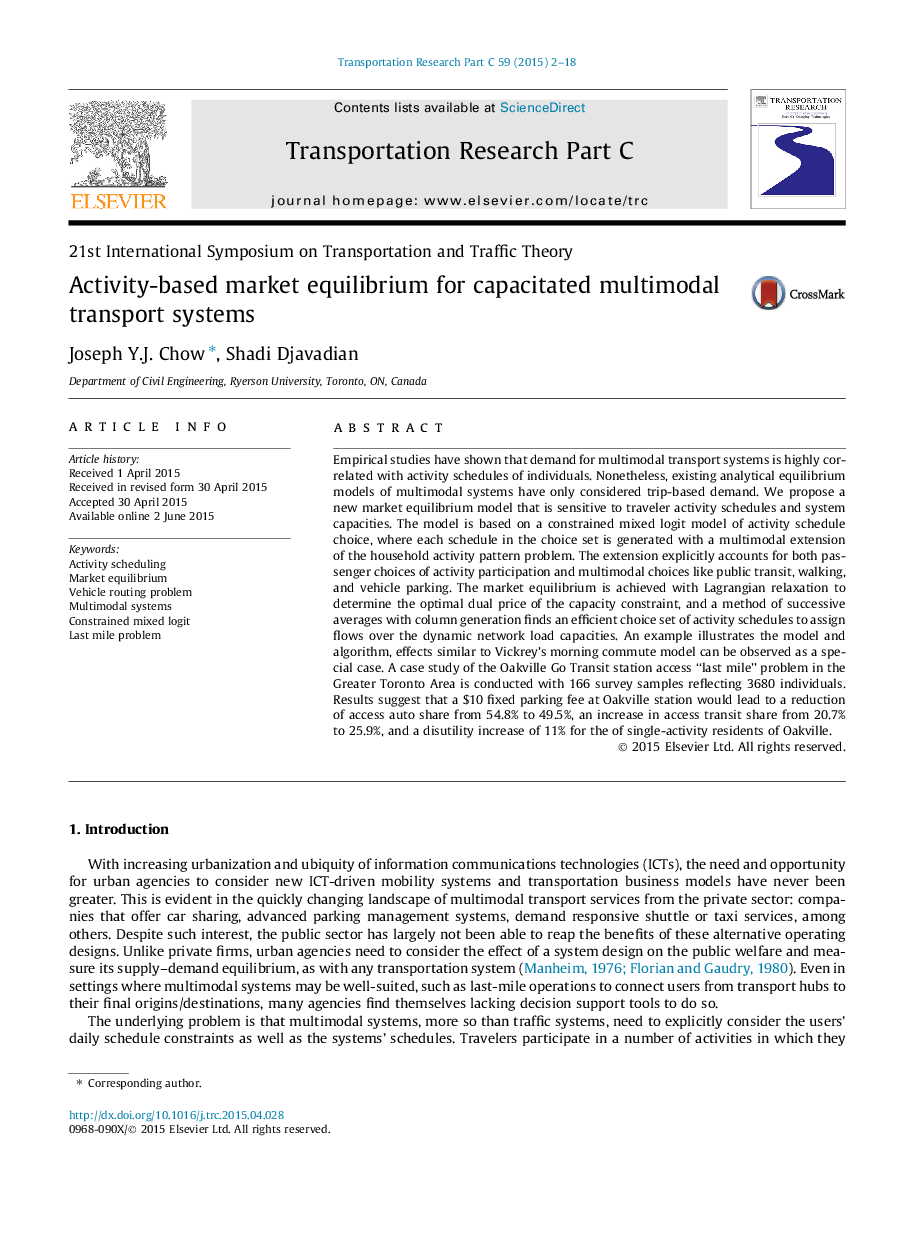| Article ID | Journal | Published Year | Pages | File Type |
|---|---|---|---|---|
| 524854 | Transportation Research Part C: Emerging Technologies | 2015 | 17 Pages |
•Extended household activity pattern problem to multimodal network.•Proposed a market equilibrium based on dynamic load capacity constraints.•Justified the use of mixed logit model to aggregate to population schedules.•Solved the market equilibrium using column generation.•Experiments reveal Vickrey-like bottleneck effects and insights for Oakville.
Empirical studies have shown that demand for multimodal transport systems is highly correlated with activity schedules of individuals. Nonetheless, existing analytical equilibrium models of multimodal systems have only considered trip-based demand. We propose a new market equilibrium model that is sensitive to traveler activity schedules and system capacities. The model is based on a constrained mixed logit model of activity schedule choice, where each schedule in the choice set is generated with a multimodal extension of the household activity pattern problem. The extension explicitly accounts for both passenger choices of activity participation and multimodal choices like public transit, walking, and vehicle parking. The market equilibrium is achieved with Lagrangian relaxation to determine the optimal dual price of the capacity constraint, and a method of successive averages with column generation finds an efficient choice set of activity schedules to assign flows over the dynamic network load capacities. An example illustrates the model and algorithm, effects similar to Vickrey’s morning commute model can be observed as a special case. A case study of the Oakville Go Transit station access “last mile” problem in the Greater Toronto Area is conducted with 166 survey samples reflecting 3680 individuals. Results suggest that a $10 fixed parking fee at Oakville station would lead to a reduction of access auto share from 54.8% to 49.5%, an increase in access transit share from 20.7% to 25.9%, and a disutility increase of 11% for the of single-activity residents of Oakville.
